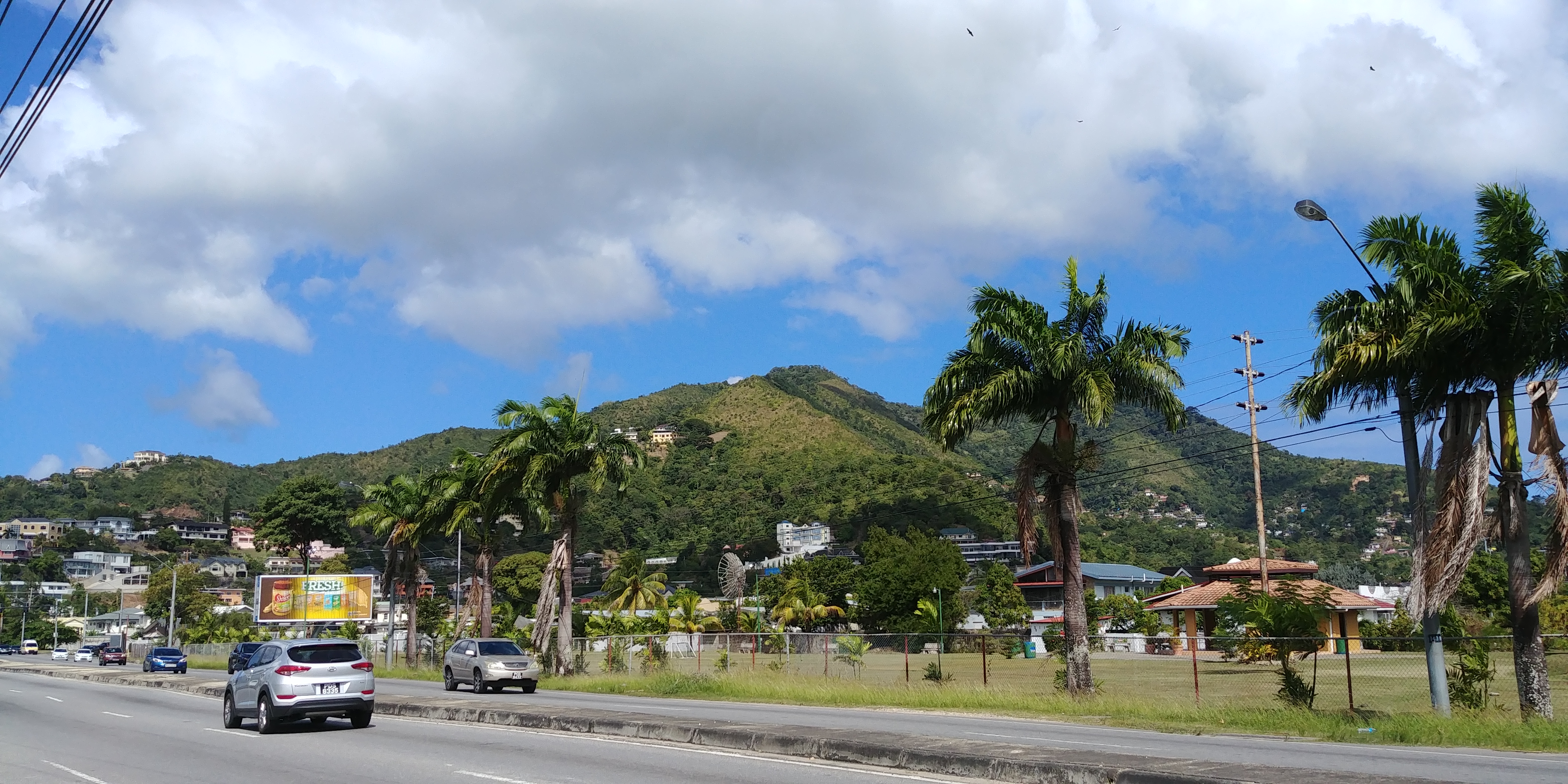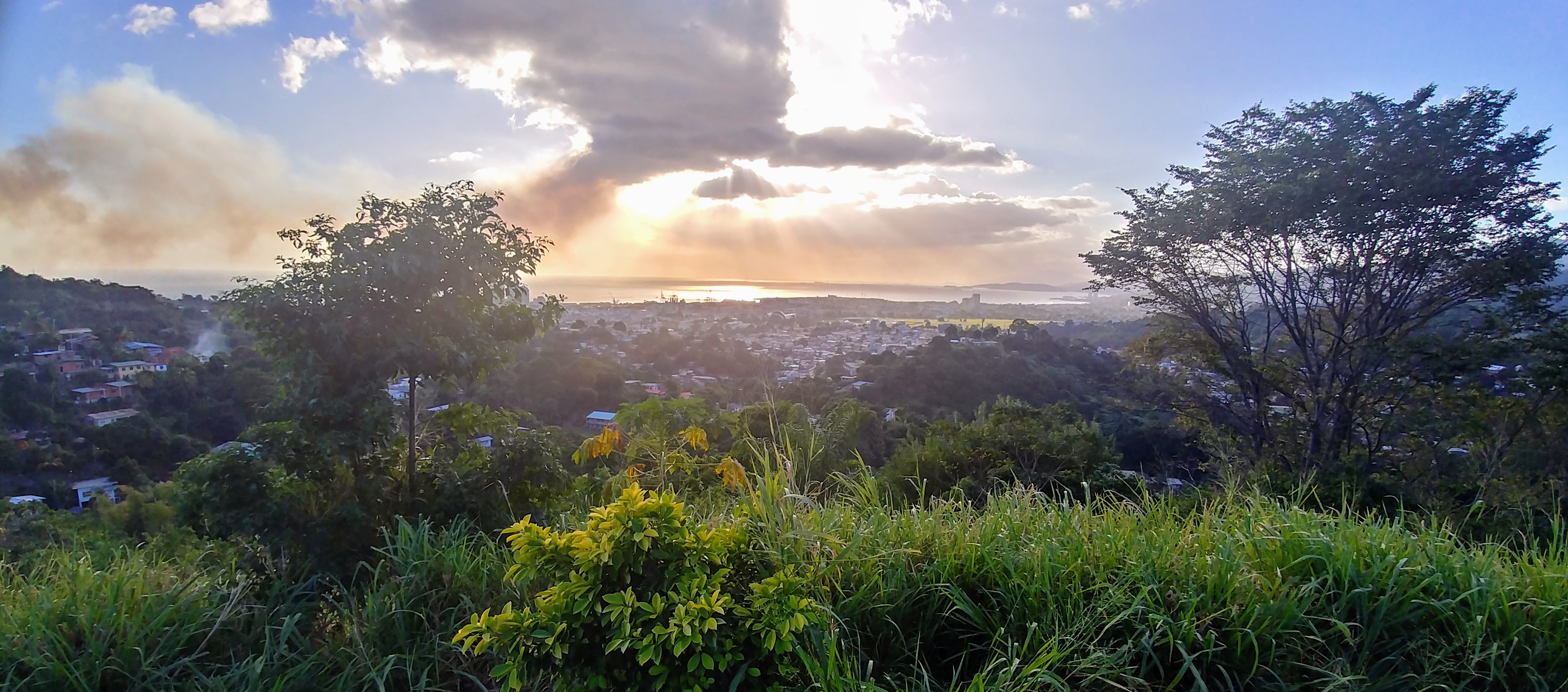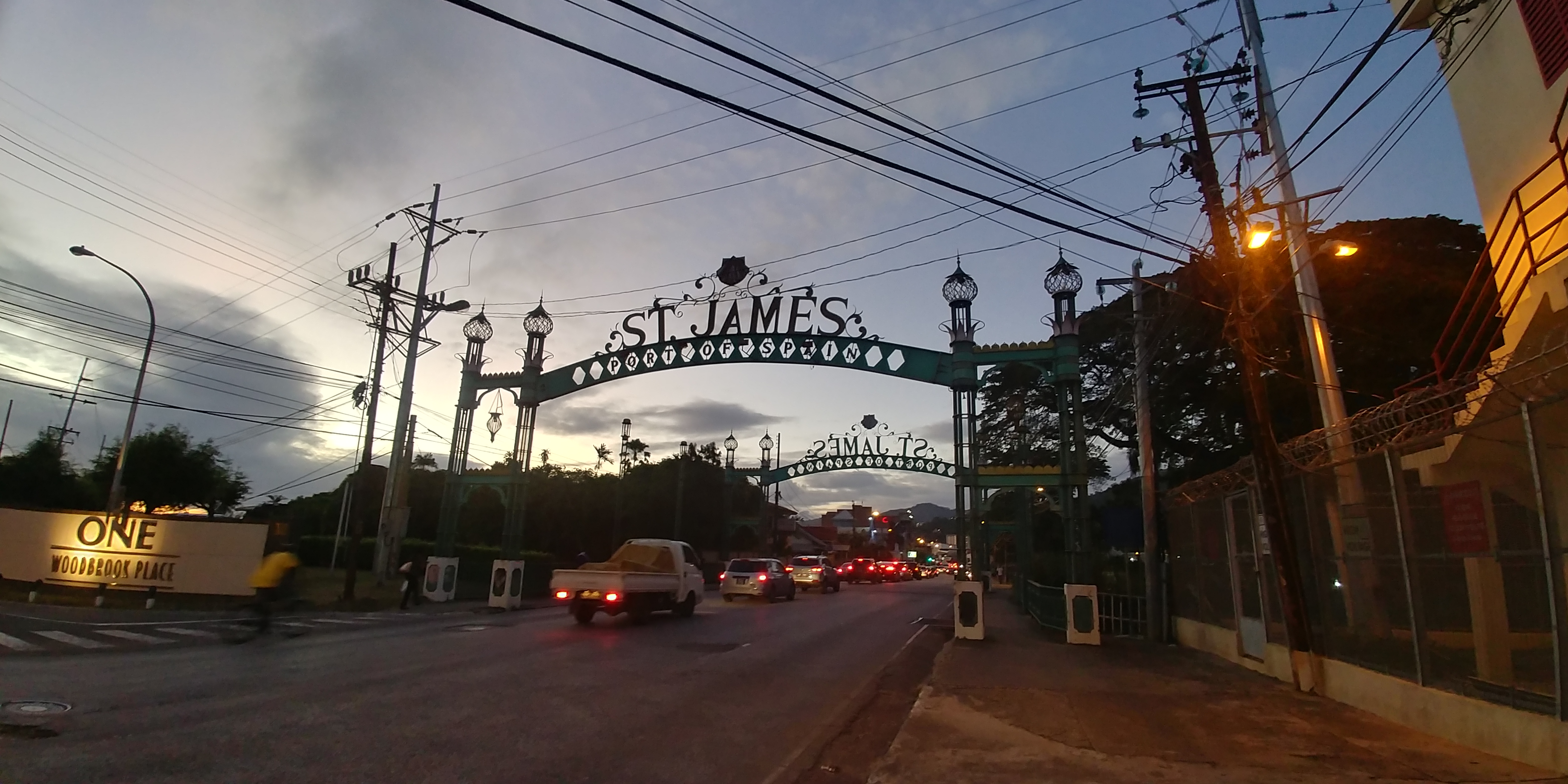
When you imagine the Caribbean, what comes to mind?
Crystal blue waters and white sand beneath your feet? Sipping frozen drinks by the pool? All Inclusive resorts on the beach?
Many people imagine a holiday destination like Montego Bay, perhaps Aruba’s iconic divi tree-lined Eagle Beach, or Bahamas’ Paradise Island (which, by the way, is just outside the Caribbean.) Few people envision bustling urban squares, oil tankers, and water taxis designed for commuters, not island-hopping vacationers. This is Trinidad.
Situated in the southeastern Caribbean Windward Islands chain, Trinidad is a major hub for air travel and an economic powerhouse. The island ranks #3 in wealth in the Caribbean, behind Barbados and Bahamas (CARICOM considers it a Caribbean country.) Along with Jamaica, Trinidad is one of the largest English-speaking islands in the Caribbean. Trinidad isn’t exactly what one would expect when dreaming of a tropical beach holiday (though Tobago, T & T’s smaller sister island, would definitely fit the bill.)
Why go to Trinidad, then?
As far as music and culture in the Caribbean, along with Jamaica, Dominican Republic, and Cuba, Trinidad’s rhythms pulsate across the region and beyond. That steel pan you hear in the subway in Times Square? That’s Trini. That campy 1990s commercial jingle, “Hot, Hot, Hot”? Trini music, too. The Calypso and Soca beats kind of sneak up on you. Like Reggae, steel pan has become a kind of default music of the West Indies.
Trinidad is an eclectic mixture of races, cultures, and religions.
When you think of a Caribbean person – or West Indian – you may imagine a person of the African diaspora – and you’re not wrong. However, what the casual outsider may not realize is that Trinidad also has a huge population of East Indian-descended people, who came to the island as indentures servants in the 1800s.
In fact, there are slightly more Indian than African descendants on the island of Trinidad (conversely, Tobago is primarily Black.) This migration has heavily influenced its cuisine with roti being the most recognizable example. The savory aromas of curry chicken or goat or channa (the Indian word for chickpea) over rice? You’re tasting India meshed with Trinidad’s own native spices and flavors.
When looking at a map, you may notice that many towns have Spanish names: San Juan, Sangre Grande, and Trinidad itself, Spanish for “trinity.” You’ll also see some vaguely French place names, like Morne Cabrite, Filette, and Grande Riviere. Unlike its neighbors, that were colonized by England, Spain, or France, Trinidad was colonized at different points in history by Spain, France, and England.
Along with place names, many Trinidadians have Spanish last names. This is evidence of T & T’s small but visible Venezuelan migrant community. Destra Garcia and Machel Montano, two of the nation’s biggest Soca stars, are prime examples of Trinis of Venezuelan heritage. After all, Venezuela is just off the coast and as close as 7 miles away in certain parts.
T & T boasts cosmopolitan cuisine, ethnic diversity, and world class music. Still not sold?
Trinidad is also world renowned for the most famous Carnival outside of Rio. Its carnival has influenced communities as far flung as New York, Toronto, and London. Just before Lent, the streets of Port of Spain become one enormous party. Steeped in African tradition, Trinis celebrate J’ouvert and mas (short for masquerade), decked out in brilliantly colored costumes adorned with feathers and sequins, among other decorations. Many people save up all year to buy a costume, which can run in the thousands (!)
Full disclosure: my fiancé, Stefan, is of Trinidadian descent and the purpose of my trip was to visit family. We stayed in West Moorings, a sea-facing suburb, just west of the capital. Trinidad has been on my bucketlist for years. I’ve wanted to go ever since I worked in Flatbush and fell in love with its food.
Stefan’s cousin, Sunil picked us up from Piarco that day. The flight, just under five hours, arrived in mid afternoon. I’d already committed my first faux pas: I packed my luggage and toiletries in a chic camouflage bag. I knew I was in trouble when we queued for customs and one of the agents instructed me to continue to another line. The solution? A large black garbage bag and the promise that I’d not return making the same mistake. Note: though popular in the United States, sporting camouflage gear is a big no no in many countries, especially in the Caribbean.
Stefan’s cousin took the scenic route back into town. We climbed the mountainous roads until we reached Lady Young Look Out. Sunil told us that there was a food truck there that sold good Jamaican food; I can’t confirm or deny this. I was more interested in stretching out my legs and whipping out the camera. It was getting to be dusk. The hill overlooked the capital with lush greenery and the sea as a backdrop: the perfect photo op.

Now, for the question you’re probably dying to know: why haven’t I mentioned the beaches? Trinidad has beaches, but Tobago is where you go for blue water. We didn’t have enough time this trip to visit but that’s definitely on the bucket list! What the larger island lacks in clear turquoise water it makes up for in isolated, unspoiled wilderness.
The day after we arrived, our first stop was Macqueripe Beach. Armed with a bathing suit, camera, and the kindness of Stef’s aunt and uncle for driving us, we rode down the beautiful Tucker Valley Road, a former military base.
The morning was drizzly and misty, creating a cloud-like effect. If you looked in the trees, you could see– and hear! – howler monkeys jumping through the branches, a sight I didn’t expect to see in the Caribbean. While Macqueripe doesn’t have that blue water, it’s situated in a bay that protects it from hard waves, giving it a calmness ideal for swimming. Filled with families and teens, this is a locals beach. I should mention, Macqueripe is also the site of ZIP-ITT Adventure Tours, which features ziplines spanning over the ocean.

Another lovely feature is the abundant fauna and flora-rich hiking trails, some of which lead to waterfalls. We visited the Bamboo Cathedral, a jungle pathway covered by the plant, that creates an arched, flying buttress-like effect. We spotted a large vulture descending on what appeared to be the remains of a snake. After a detour, we were on our way walking along the main road into Chaguaramas, where we caught a maxi taxi.
Eating and Drinking on the Town
For an evening out, what to do? I must admit, I was surprised by how few traditional bars I found in and around Port of Spain. If you’re relatively young and looking for more of an American-style bar atmosphere, head to Ariapita Avenue. There you’ll find bars, restaurants (we ate Thai one afternoon), and nightclubs. Trinidadian nightlife is less about apple martinis and cosmos, and more about throwing down Carib, Trinidad’s national beer — and one of the most popular in the region — or having a shot of rum (Angostura will do the trick.) I prefer Mackeson myself, a sweet milk stout brewed by the distributors of Carib.
If you’re looking for a unique Trinidadian experience, hit up a rum shop. The best place, perhaps, is in the St. James neighborhood along Western Main Road. You can buy rum by the shot, as well as ice cold bottles of beer. There you can play pool, watch sports, or pull up a chair to the sidewalk to watch the world go by. In other words, just limin’, the Trini word for hanging out.
What should also be mentioned is that St. James is home to numerous pan yards, that is buildings or lots designated for pan camps or steel pan bands. We were around in late January, just weeks before Trinidad’s famous Carnival, and got to see pan players practicing. Steel pan is to T & T as bagpipes are to Scotland, so there’s no escaping it.

It’s All in the Hips
Speaking of limin’, after a night of drinking, the perfect plan is to head to Maracas Beach. If you haven’t visited Maracas at least once on your trip, you haven’t really experienced Trinidad. People don’t simply come here to swim– and the current is strong! I’m afraid to tell you that it knocked me over, stripping me of my bikini top in the process. Maracas is not the place to practice your laps.
We were off to a Sunday afternoon, again, courtesy of Stef’s Uncle and Aunt. This is a place where you can pull up a plastic chair, strike up a conversation with a stranger, and end up sharing a shot of rum. True story. On any given weekend, you’ll likely encounter a fete or the aftermath of one — large, vibrant party. The music is pumping — Soca, of course. Unlike in the United States, a party ain’t a party without music and dancing. It’s here that you’ll also observe or partake in another favorite Trini pastime: wining. This is a dance that gets up close and personal with your partner. It’s all in the hips!
I love a strong rum punch and you’ll definitely find one at the stalls lined up along the road. One experience you cannot afford to forgo while at Maracas is sampling its famous bake and shark. While there are a half dozen or vendors selling this delicacy, Richard’s, the original, is the truth. Even if you’re not into fish, the fillet is lightly fried and mild. The bake, which is a fluffy fried bread, is just as good as the shark.
Once you get your order, make your way to the condiment counter, where you’ll find the imaginative to the mundane. I like mine with heat: hot sauces of various temperatures (Matouk’s is a personal favorite of mine), pineapples, and spicy cucumbers. Whatever you do, please promise me you won’t douse yours in mayonnaise.
Let’s talk about food
On a night out, you’re looking for something fast and easy to nosh on. If you’re from New York, that’s a pizza slice, kebabs in Turkey and parts of Europe, and arepas when in Colombia or Venezuela. in T & T, the street food of choice is doubles. Like arepas or hotdogs or tacos, doubles is a street food. What is it a doubles, you ask?
Created by descendants of East Indians, it’s made of two pieces of savory fried bread (not unlike bake) known as bara and filled with fragrant curried chickpeas. Its usually topped with tamarind sauce, pepper sauce, or kuchela, a mango-based chutney, can be added. You may also get fresh, shredded spicy cucumber toppings, like a relish.
One of the best places to go for one is the spot on the corner of Ariapita Avenue and Fitt Street. The dough is heavenly fluffy, and the channa, fiery yet the spiciness doesn’t obscure the complex flavors and aromas. Having said that, you’ll definitely need a cold drink to cool your mouth, but you’ll be satisfied. Many Trinis swear by this street vendor. You should too.
Which brings us to…roti!

Roti is also of East Indian origin, though not the same as its continental equivalent. It reminded me more of Malaysian roti canai or other South East Asian variation. In Trinidad, Guyana, and other Indian-influenced Caribbean nations, you’ll find two varieties of roti: dhal puri and paratha. While Indian dhal puri is circular and fried, the Caribbean version is a very thin skin. But please, whatever you do, do not call it a burrito!
Dhal puri, the most common type, is filled with curried meat, seafood, or if you’re a vegetarian, aloo and channa (that is, potatoes and chickpeas.) Paratha, commonly known as “buss up shut,” is a torn, shredded version of roti that is used to scoop up sauces, veggies, and meats in much the same way you would with a tortilla chip or piece of bread.
When you’re in Downtown Port of Spain you may be guided towards Patraj, Dopson’s, or Hosein’s roti shops. A place where you may not think to go but should is to the Town Centre Mall where you can go upstairs and have yourself a roti packed with mango sauce. After leaving Stefan’s Aunt Denise’s home in Belmont, she suggested it when we asked where the nearest and best roti was.
Oh, and if you still have room for it, take a short walk to Independence Square and treat yourself to a currant roll at Chee Mooke’s Bakery, one of the oldest on the island. At 85 years old, it’s still a family owned local favorite that’s worth a stop.
Taking It All In
Trinidad is hot. As much as a marathon walker as I am, an afternoon of humid, 85 degree heat depletes even me. You’ll need to sit down and rest. There’s the Queen’s Savannah, which isn’t very shaded except at its periphery. However, I prefer to pot a squat at Woodford Square, right in the midst of it all. We caught a steel pan player (notice a pattern?) playing along to popular Soca and Calypso songs. It’s nice to buy yourself a snow cone and sit under a tree just people watching.
I think it suffices to say that I’ve barely scratched the surface. Trinidad may not appeal to the casual traveler looking for turquoise ocean, frozen drinks, and kitschy souvenirs. The trade off is you get to experience a place that hasn’t been devoured by the tourism industry. I’m looking at you, Cancun. Verdant forests, flavorful food, and beachfront where you can truly *just* relax await you.